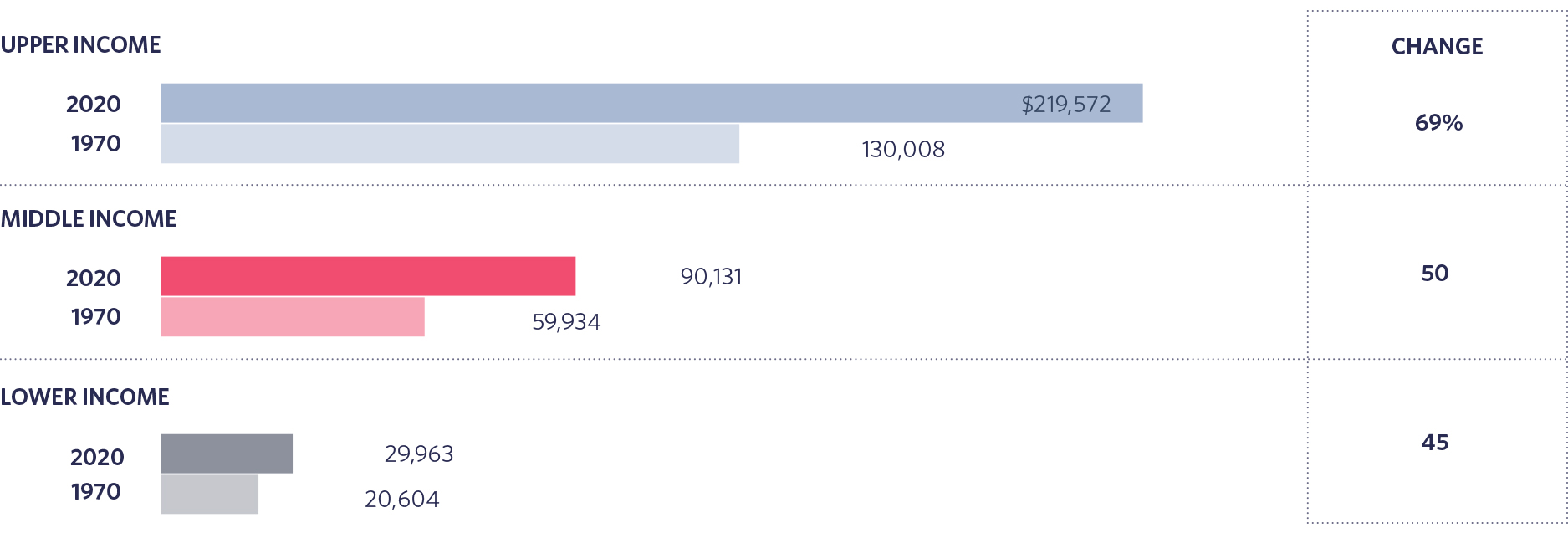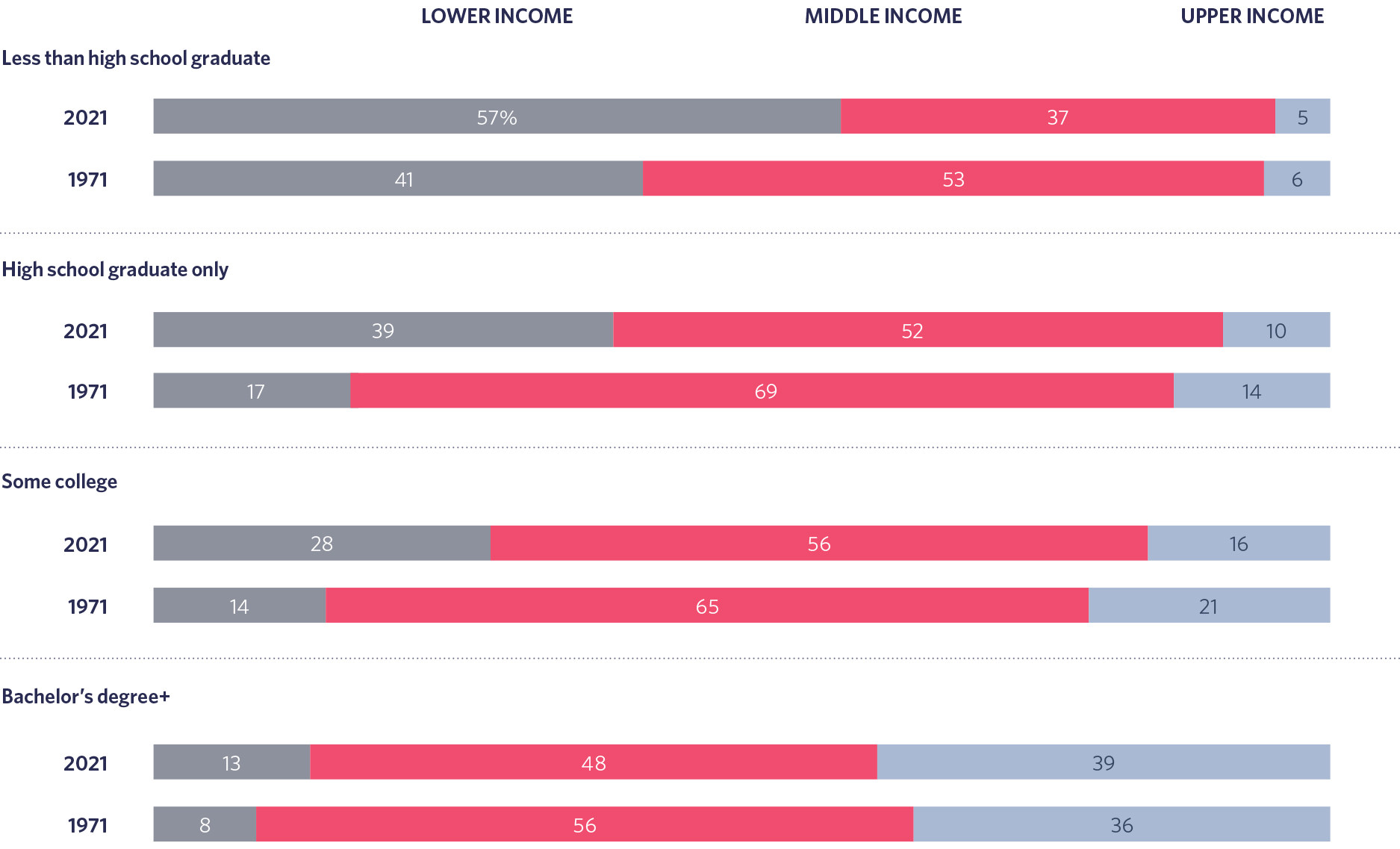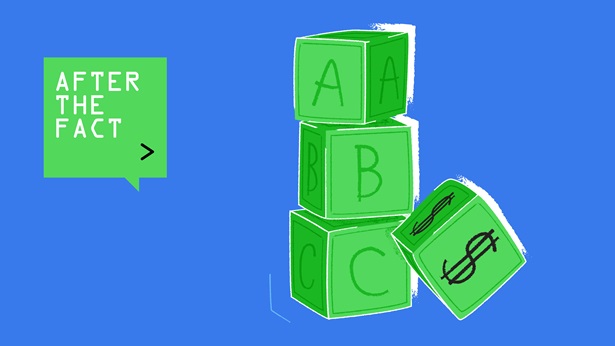How the American Middle Class Has Changed in the Past Five Decades
End note
The middle class, once the economic stratum of a clear majority of American adults, has steadily contracted in the past five decades. The share of adults who live in middle-class households fell from 61% in 1971 to 50% in 2021, according to a new Pew Research Center analysis of government data.
Here are three key facts about how the economic status of the middle class has changed since 1971:
1. Household incomes have risen considerably since 1970, but those of middle-class households have not climbed nearly as much as those of upper-income households.
Median income, in 2020 dollars and scaled to reflect a three-person household
2. The share of aggregate U.S. household income held by the middle class has fallen steadily since 1970.
% of U.S. aggregate household income held by lower-, middle- and upper-income households
Note: Shares may not add to 100% due to rounding.
3. There is a sizable and growing income gap between adults with a bachelor’s degree and those with lower levels of education.
% of adults in each income tier
Note: Adults are assigned to income tiers based on their size-adjusted household incomes in the calendar year prior to the survey year. “High school graduate” refers to those who have a high school diploma or its equivalent, such as a General Education Development (GED) certificate, and those who had completed 12th grade, but their diploma status was unclear. “Some college” includes those with an associate degree and those who attended college but did not obtain a degree. Shares may not add to 100% due to rounding.











